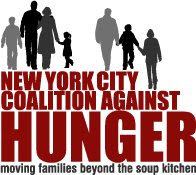During the holidays, the local news is full of stories of food drives and images of stacked canned goods collected in an effort to help feed hungry New Yorkers. Food drives may help bring attention to food shortages at emergency food programs and food banks, but they are an inefficient means of supplying these programs with food.
Government funding enables emergency food programs to purchase food for their clients at deeply discounted rates. The food purchasing power of these programs is sometimes as much as ten times that of an ordinary consumer, meaning that the 99 cents a well-intentioned food drive participant spends on a can of beans could buy ten cans of beans if the donor gave that money directly to a food pantry. Many food pantries also have trouble integrating donated food items into their current stock. Often, there is not a large enough volume of any one item to ensure that families are getting fair and equal shares of the food they need.
There are, however, many more effective ways to assist emergency food programs. Here are a few alternatives to consider:
- Get involved in advocacy efforts to increase and streamline food stamp benefits, provide public school students with free meals, and increase state and federal funding for emergency food programs. By supporting NYCCAH, you can advance these advocacy efforts which work to improve food access for all New Yorkers.
- Use your professional skills to contribute to an emergency food program as a long-term volunteer. Many emergency food programs are severely under-staffed and in need of accounting, web design or development help. Visit NYCCAH’s Volunteer Matching Center to find a professional volunteering opportunity near you.
- Collect funds for your local soup kitchen or food pantry. If your organization is interested in developing a long-term relationship with an emergency food program, consider a funding drive rather than a food drive. Search NYCCAH’s Hunger Maps by keyword, borough or zip code to find an emergency food program near you.













